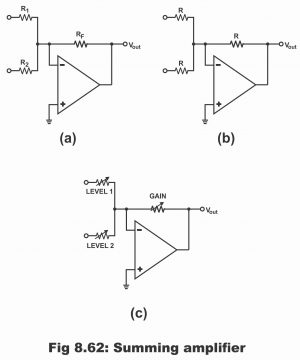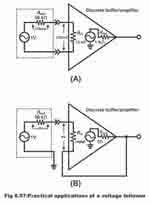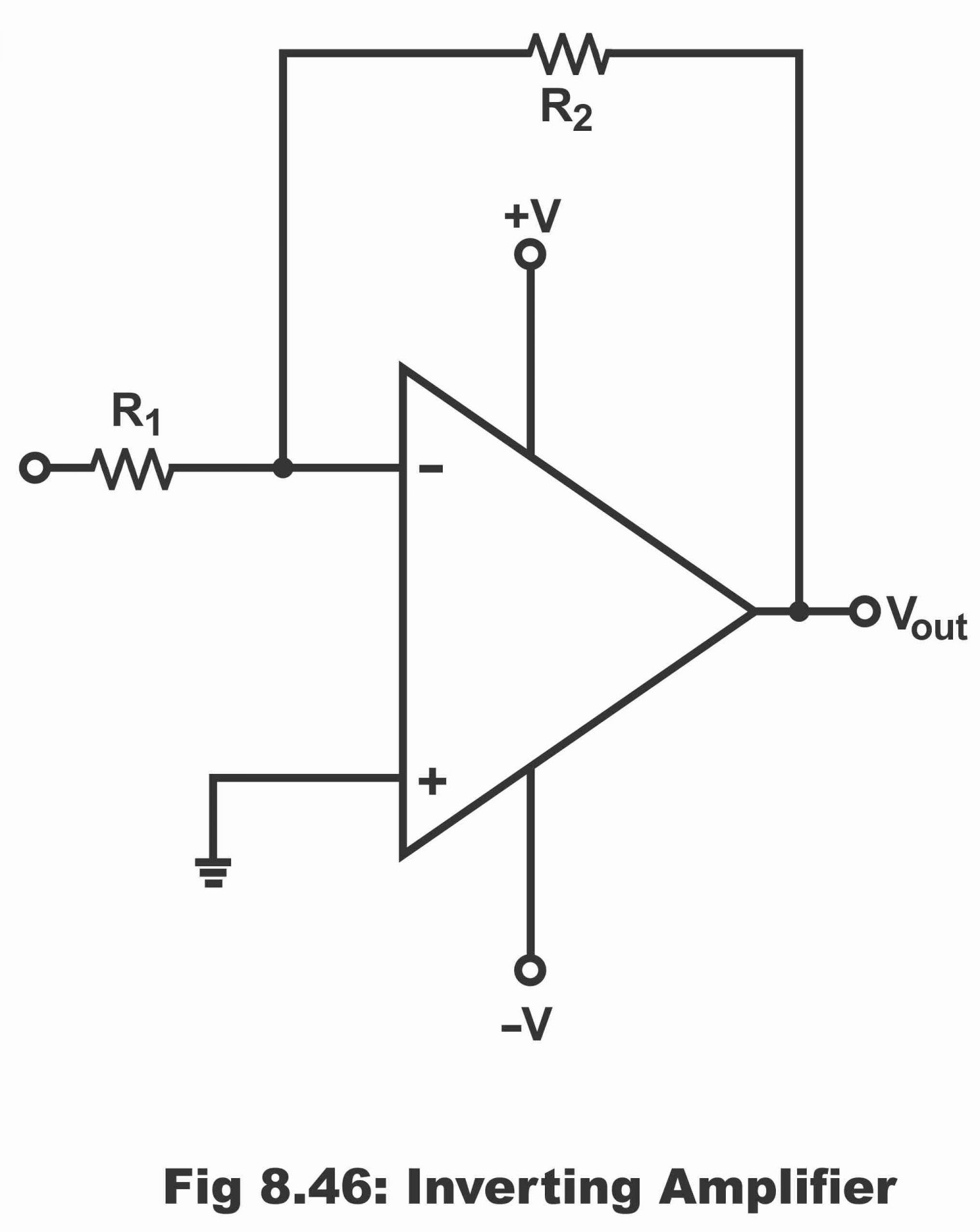Summing Amplifier with Equation Example
Summing Amplifier
One of the advantages of an inverting amplifier is that it can provide output in the shape of a signal output through mutually summing up two or more than two analogue input signals. Thus, an amplifier that has the capacity of summing up two or more than two inputs is known as a summing amplifier. The output voltages of a summing or adder amplifier circuit are equal or proportionate to the algebraic sum of two or more than two input voltages (each of which is multiplied by a constant gain factor).
In figure 8.62 (a), a summing amplifier has been illustrated. For simplicity purposes, only two inputs have been shown in this circuit, however there may be a number of inputs. Such a circuit amplifies every input signal and gain of every input is expressed as a ratio of feedback resistance (RF) and proper input resistance e.g. as per figure (a) closed-loop voltage gains of two inputs are as follows:
ACL1 =RF/R1 and ACL2 = RF/R2
Summing circuit combines or adds all amplified input signals and converts it into a single output signal, which can algebraically be expressed as follows:
Vout = ACL1 V1+ACL2 V2
As inverting input is being virtually grounded, therefore input current i1 passing through R1 and input current i2 passing through R2 are equal to total input current i.e.
iin = i1+i2 =V1 / RF +V2/ R2
By means of a virtual ground, this total current generates output voltages after passing through feedback resistor, the values of which are as below:
Vout = (i1 + i2) RF = RF/R1 V1+ RF/R2 V2
It is clear from the above equation that each input voltage is multiplied with its input gain or channel gain and they are added or summed for getting total output i.e. Vout = Av (V1+V2). This principle applies on every number of inputs.
Figure 8.62-a, b, c – Summing Amplifier
The values of resistances in some of the applications are the same, as displayed vide figure (b). In such a situation, closed loop voltage gain of every channel is unity (1) and output of such a circuit can be represented as follows:
Vout = V1 + V2 … +Vn
In figure © a mixer has been shown, which is an easy method of combining audio signals. The level of each input can be set via adjustable resistors as shown in the figure while the combined output volume can be adjusted via gain control. We can increase the signal value of V1 on output by means of reducing level 1 while by reducing level 2, we can increase V2 signal while both signals can be enhance via increasing gain.
Next Topic: Voltage Follower
Previous Topic: Inverting Amplifier and Circuit Operation
For electronics and programming-related projects visit my YouTube channel.





